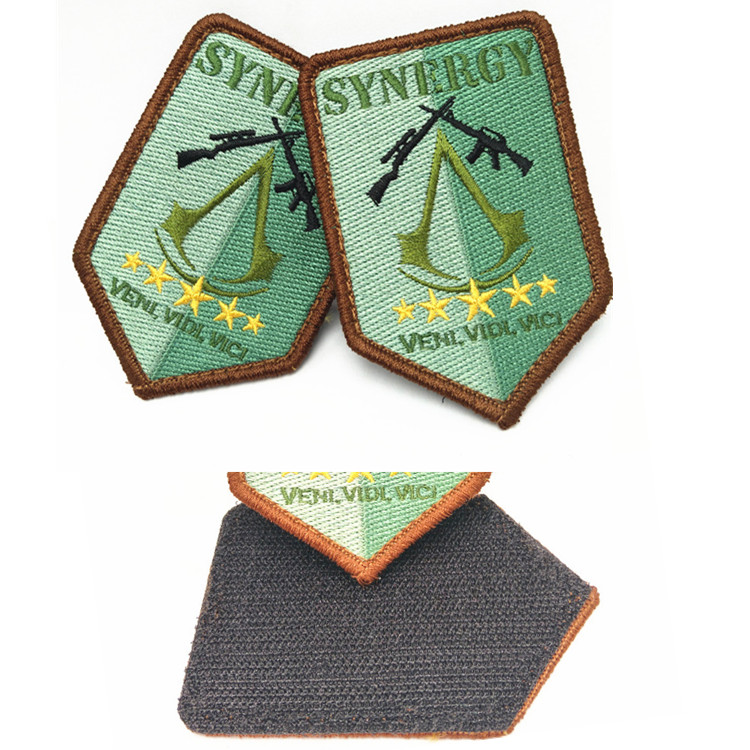An embroidered patch, also known as a cloth badge, is a piece of embroidery which is created by using a fabric backing and thread. The art of making embroidered patches is an old tradition and was originally done by hand. High-speed, computerized machines have led to mass production.
There are various methods of affixing them to the fabric surface. Embroidered patches can be attached with a pin, sewn on, or affixed with more modern methods such as iron-on, dryer heat-activated adhesive, and hook and loop backing.
History
Embroidered patches—an important identification tool for military and other uniformed personnel—trace their roots thousands of years ago to ancient cultures of the Mediterranean, Mideast, China, India and South America, where the art of decorating fabric with thread stitching originated.Elaborate hand-stitched designs and patterns were used to embellish the robes of royalty and for religious artifacts.
Today, embroidered patches are used by government organisations (including uniforms of military forces, emergency services and other specialised workers), sports teams and companies in the private sector to denote rank, job, specific position or specialised unit. Youth groups, including sports teams, scouting organizations and specialized clubs, often wear clothing emblazoned with embroidered patches. They are also used by space agencies on the uniforms of astronauts to denote the mission. Patches are collected by enthusiasts as well.
Manufacture
Before the advent of computer technology, patches were made by hand. The general process, however, remains the same today. First, a fabric backing is cut to shape. To prevent fraying, the edges of the backing are heat-sealed. Then, the thread is stitched into place. Some designs incorporate the backing as the background of the patch, while others completely cover the backing with stitches. To finish the patch, iron-on adhesive may be applied to the reverse—a step that was not originally done.
Machinery created during the 18th- and 19th-century Industrial Revolution changed garment production with technology such as power looms and sewing machines, making fabrics of more uniform quality and greatly increased production efficiency.
Embroidery—once a time-consuming hand-made stitch-by-stitch process—was revolutionized by the introduction of the Schiffli embroidery machine, invented by Isaak Groebli of Switzerland in 1863. Like the game-changing sewing machine, it operated with a two-thread system. Early production from the multi-needle machine, powered by a hand-turned crank, wasn’t much quicker than handwork, but significantly, multiple copies of identical designs could be created. Groebli's machine utilized the combination of a continuously threaded needle and shuttle containing a bobbin of thread. The shuttle itself looked similar to the hull of a sailboat. "Schiffli" means "little boat" in the Swiss dialect of the German language, so his machine came to be known as a schiffli machine.[3] An automatic machine, refined by Isaak’s eldest son in 1898, simplified the mechanical system so it could be run by a single operator.
Types of stitches—including chain stitch, button hole or blanket stitch, running stitch, satin stitch, and cross stitch— are the basis of embroidery. Patches are often crafted from chain, satin, and hemming stitchesand machine work relies on the use of multiple threads.
Advanced technology allows virtually any design to be recreated in thread on an embroidered patch. Images previously created by hand in a time-consuming process can now be quickly, digitally scanned, and computer-controlled, with multi-head sewing machines use several colors of thread simultaneously.
Other modern advancements include applying a plastic backing to the patch, improving stiffness, and preventing bunching or wrinkling of the design. Patches are often die-cut into specific shapes with a border protected from unraveling by serge stitching. Polyester blend threads are colorfast and have superior durability as compared to cotton thread.

